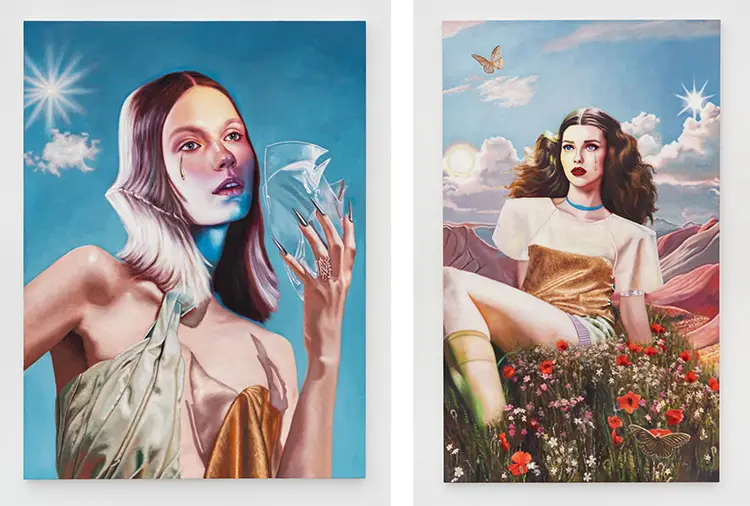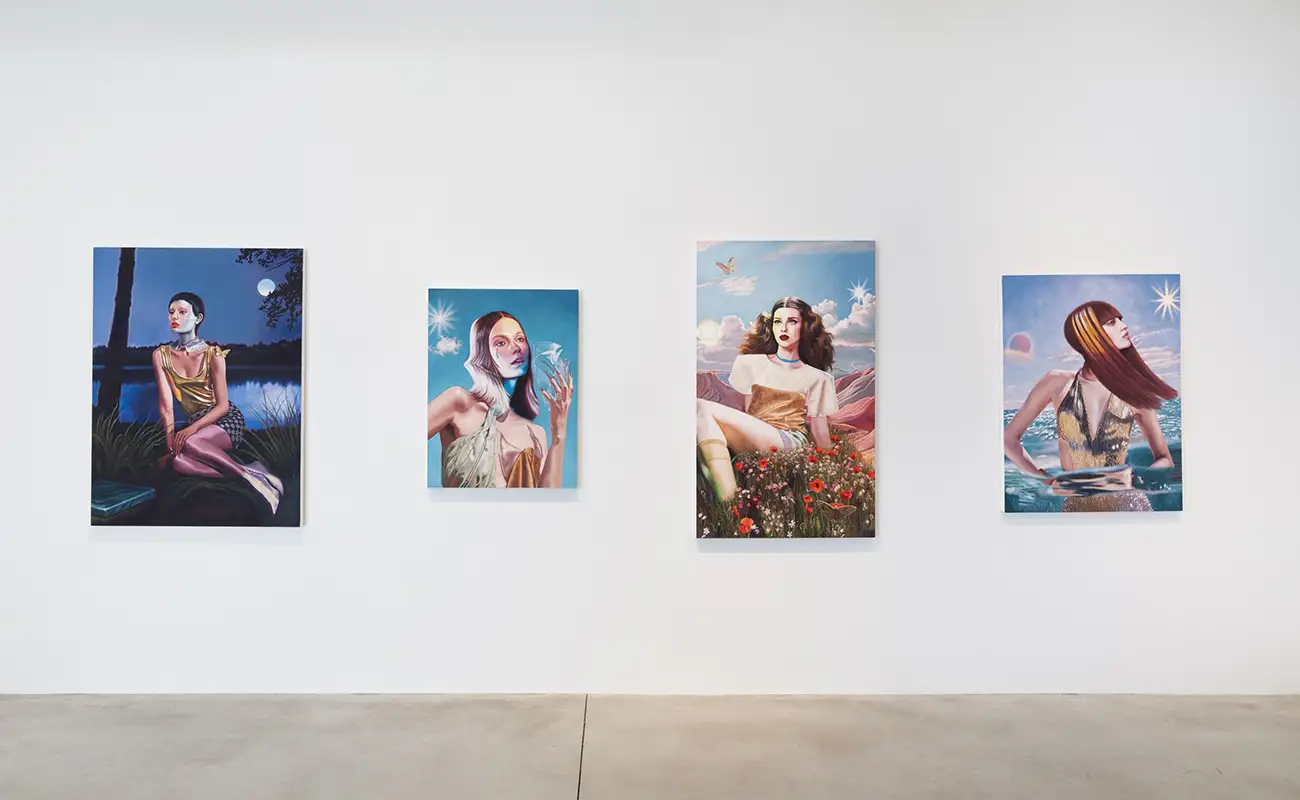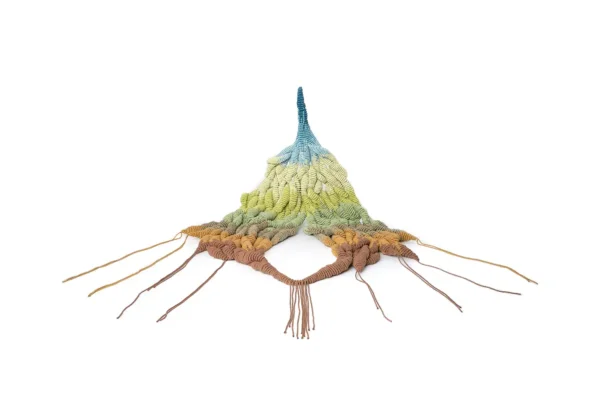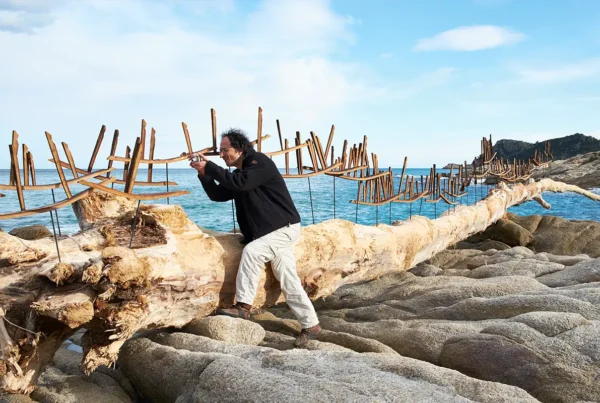“I set their story in the modern day, connecting it to things that are happening in our lives now.”
Los Angeles Dreaming: Contrasts and Catalysts in Alison Blickle’s Vision
Alison Blickle stands at the intersection of historical painting and modern existential inquiry, bringing together the grandeur of classical traditions with the uncertainty of contemporary life. A fourth-generation Californian, Blickle draws significant inspiration from the layered identity of Los Angeles, a city overflowing with beauty and decay, ambition and illusion. Her work doesn’t merely reflect her surroundings but instead dissects and reassembles them through a cinematic and painterly lens. By channeling the peculiar energy of Southern California, she captures the paradox of a place simultaneously defined by nature’s splendor and cultural artifice. This emotional and environmental contrast forms the foundation of her creative outlook, setting the stage for the mythologically charged narratives that unfold across her canvases.
Blickle’s paintings are immersive, filled with tension and desire, often revealing the undercurrents of the modern human condition. Los Angeles serves not just as a backdrop but as an emotional metaphor, offering her a language through which to explore broader themes of illusion, identity, and spiritual longing. While the city presents itself as a wellspring of creativity and innovation, it is equally marked by the darker elements of disconnection and broken aspirations. In engaging with this duality, Blickle creates works that are rich in symbolism, where each brushstroke carries the weight of contradiction. Her interest lies in not just what the city shows, but what it suppresses—an aesthetic and emotional dissonance that resonates deeply within her figures and their environments.
What separates Blickle’s practice from others working within the figurative tradition is her ability to weave psychological complexity into visual storytelling. Through allegory and theatrical composition, she captures the contradictions of the human spirit in the digital age. She finds beauty not only in light but in distortion, often presenting seemingly idyllic scenes that upon closer inspection reveal the uncanny. Her paintings don’t offer resolution but instead invite contemplation, mirroring the modern condition of yearning for connection while navigating a world that often feels fragmented and synthetic.
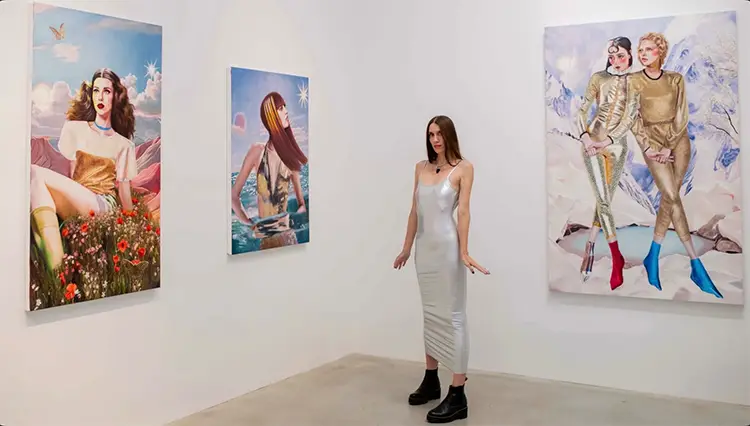
Alison Blickle: Myths Reimagined for a Fractured Present
Blickle’s artistic journey is anchored in her early exposure to creativity, nurtured by a family where storytelling and artistic expression were part of everyday life. Painting was never a hobby or passing interest for her; it was always the primary language through which she processed the world. From sketching alongside her father to absorbing narratives from her grandmother, an author, her upbringing was steeped in the idea that art could communicate the unspeakable. These influences laid the groundwork for a style that is both emotionally driven and intellectually engaged, marrying fine art techniques with narrative depth.
A defining trait of Blickle’s practice is her use of myth as a structural and thematic framework. She often begins a new series by selecting an ancient story centered on a powerful female figure. These archetypes, once isolated in antiquity, are then relocated into modern settings, allowing their struggles and triumphs to echo across time. The transformation is not merely cosmetic; Blickle’s adaptations highlight the timelessness of these myths and their relevance to contemporary social, psychological, and emotional landscapes. By filtering these stories through a modern lens, she allows ancient symbols to converse with today’s anxieties about identity, control, and transcendence.
This blending of classical narratives with current sensibilities aligns seamlessly with Blickle’s visual style, which borrows heavily from the grandeur of historical painting. Whether depicting moments of divine revelation or quiet introspection, her compositions remain imbued with a theatricality that demands attention. Her works function like scenes from a dream or film, carefully constructed but layered with ambiguity. Through myth, she creates a language that is both ancient and urgent, enabling viewers to explore complex emotional states without the need for linear explanation. It is this careful balance of storytelling, visual beauty, and conceptual inquiry that gives her work its distinct resonance.
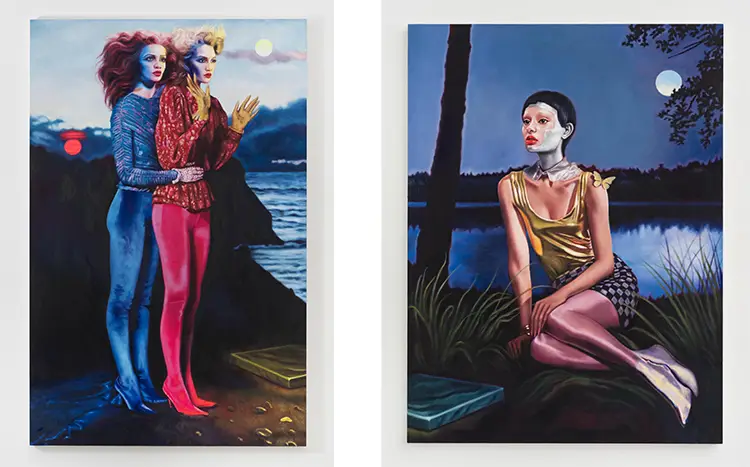
Between Illusion and Memory: Constructing a Virtual Sublime
Blickle’s current exhibition, Future Ruins, presented at Kravets Wehby Gallery, represents a pivotal evolution in her artistic exploration. This series envisions a future where the natural world has eroded beyond recognition, and human beings seek spiritual fulfillment within artificial landscapes. These landscapes are not painted from nature but imagined as simulated spaces—technologically generated environments where human avatars attempt to commune with a reality that no longer exists. In this speculative setting, nature is reimagined not through memory but through programming, resulting in heightened, artificial terrains that hover between beauty and emptiness. The figures, no longer fully human, appear as stylized representations of longing, their features bearing traces of digital manipulation and emotional dislocation.
The paintings in Future Ruins are rich in both visual texture and conceptual tension. Saturated colors and hyper-real surfaces create a seductive veneer, but upon closer inspection, viewers discover embedded flaws and glitches. These imperfections function not as errors but as intentional disruptions, subtle reminders of what has been lost or fabricated. By presenting nature as a mediated experience, Blickle critiques a society increasingly distanced from the organic world and reliant on simulation to fulfill emotional and spiritual needs. This virtual sublime is as captivating as it is disquieting, exposing the fragility of human attempts to replace authenticity with design.
While the aesthetics of Future Ruins are rooted in fantasy, the emotional core of the work remains grounded in reality. The figures portrayed in these imagined ecosystems grapple with the same timeless desires found in Blickle’s mythological narratives: a longing for transcendence, a search for identity, and a deep need for connection. However, in this futuristic setting, those desires are filtered through interfaces and avatars, underscoring the increasing abstraction of our inner lives. In these paintings, viewers encounter not just a vision of the future, but a mirror reflecting the anxieties and estrangements of the present.
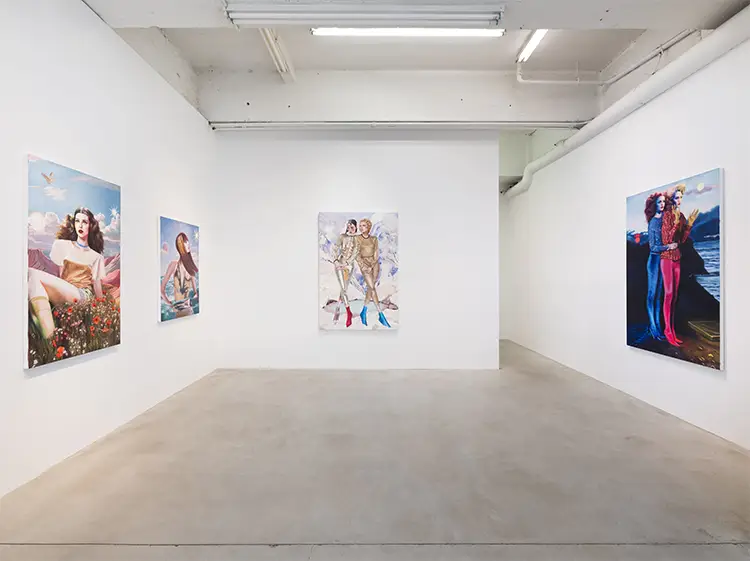
Alison Blickle: Classical Technique for a Disconnected Age
Blickle’s technical influences reveal a profound reverence for the grand traditions of Western painting. Her admiration for history painting, with its dynamic compositions and emotionally charged group scenes, informs both her subject matter and execution. By adopting the visual strategies of the old masters, she situates her work within a broader art historical dialogue, while simultaneously transforming that language to suit modern narratives. Her paintings do not mimic the past but engage with it, using classical aesthetics to ask urgent questions about today’s fractured identities and digital dependencies. Through this lens, she explores how traditional methods can still speak powerfully to modern viewers.
One of the most compelling aspects of Blickle’s style is her dedication to creating paintings that feel simultaneously timeless and contemporary. This is no easy feat; it requires a deep understanding of both historical technique and present-day visual culture. Her admiration for filmmakers like David Lynch further shapes her approach, particularly in the use of surreal lighting, theatrical sets, and emotional ambiguity. Like Lynch, Blickle is interested in what lies beneath the surface. Her figures often appear staged or costumed, set within environments that blur the line between dreamscape and documentary. This cinematic sensibility adds an eerie, almost voyeuristic quality to her paintings, intensifying their emotional impact.
Blickle’s commitment to storytelling through visual means allows her work to operate on multiple levels. While her compositions are undeniably beautiful, they also provoke deeper reflection about authenticity, alienation, and the commodification of nature and identity. The artificiality present in her latest works isn’t a departure from her earlier narratives but a progression of them, shaped by an evolving world. In adopting classical techniques to depict synthetic futures, she creates a poignant paradox: using the past to critique the future. This complex layering of form and meaning positions Alison Blickle as an artist uniquely equipped to capture the emotional dissonance of our current moment.
